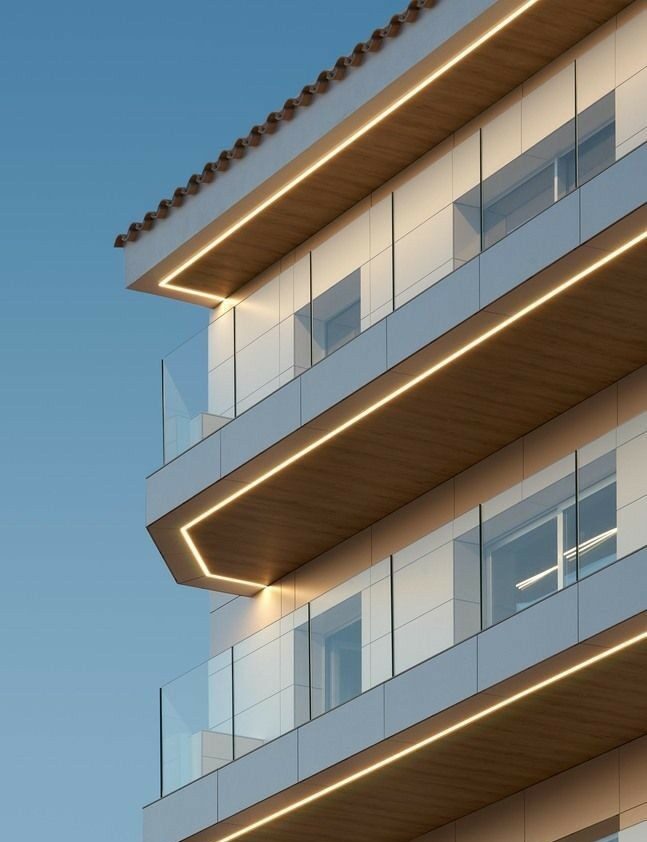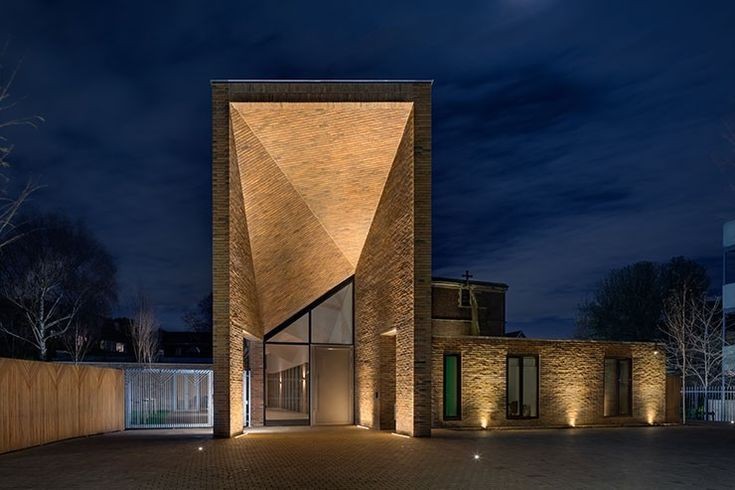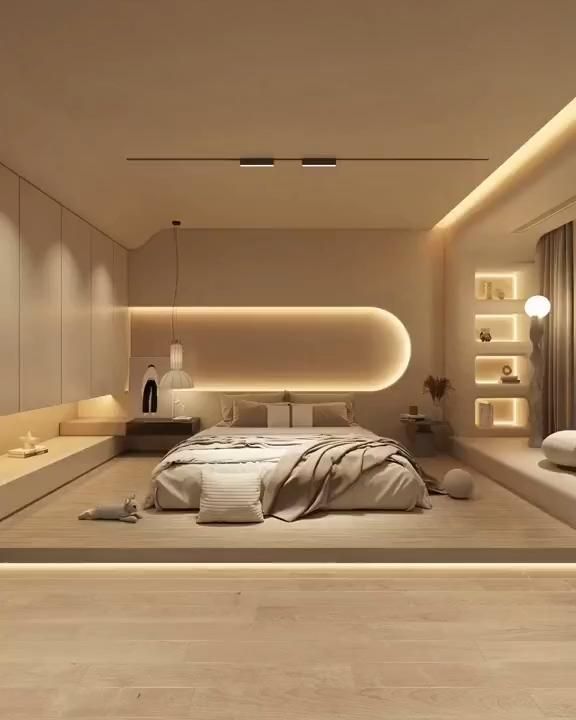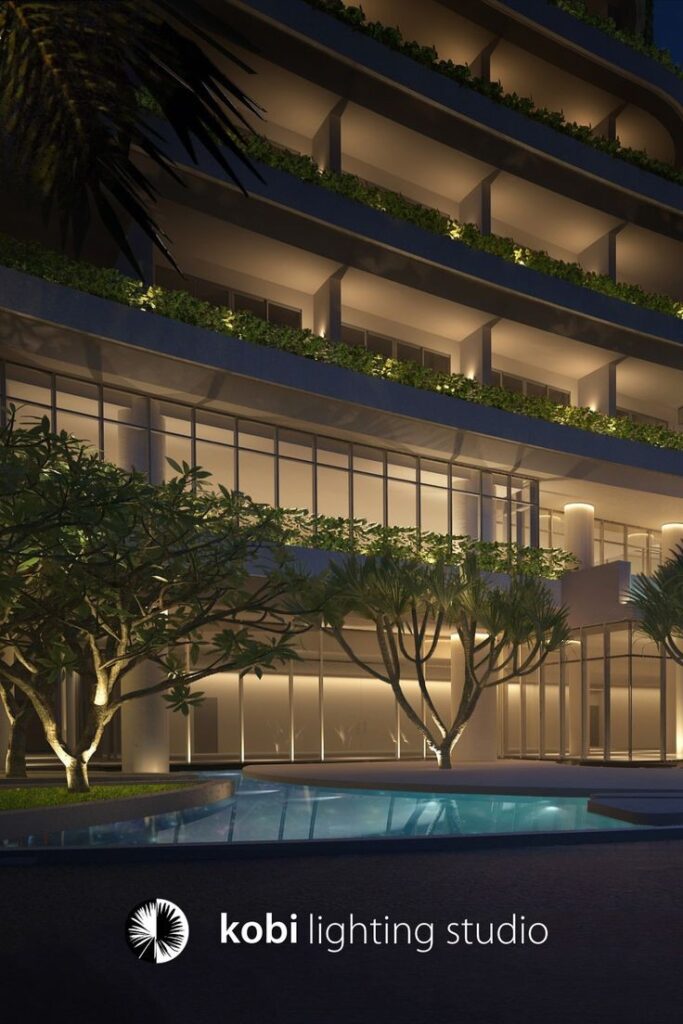Lighting in residential units not only serves a functional purpose but also plays a key role in shaping the visual identity and creating a pleasant and calming atmosphere. The correct selection of light sources and smart lighting design for residential units can provide a warm and friendly environment for daily living while also highlighting the beauty and attractiveness of the space. From general lighting to accent and decorative lighting each part of the house can be transformed into a unique space that meets the functional and aesthetic needs of the residents in the best possible way.
Comprehensive Guide to Residential Lighting for Interior and Exterior Spaces
Lighting in residential units has a significant impact on visual appeal, space efficiency and the emotional experiences of the residents. Proper lighting design for residential units, whether for interior or exterior spaces should be based on functional needs, aesthetics and energy efficiency. This guide introduces you to the principles, techniques and key tips for lighting design to create a pleasant and functional environment.
Interior Lighting
- Ambient Lighting
-
- The purpose of ambient lighting is to provide uniform light throughout the space.
- It is common to use ceiling lights such as chandeliers recessed LED lights or pendant ceiling lights.
- In designing this type of lighting direct glare and unpleasant shadows should be avoided.
1.Task Lighting
- This lighting is used for specific activities such as reading, cooking or working on a computer.
- Examples include reading lamps, under-cabinet lighting in kitchens or desk lamps.
- Light sources should be focused and adjustable to prevent eye strain.
2. Accent Lighting
- The purpose is to highlight specific elements of the decor such as paintings, vases or bookshelves.
- Small spotlights or track lights are great for this purpose.
- This type of lighting helps create depth and visual interest in the space.
3. Decorative Lighting
- In addition to providing light it acts as a decorative element.
- Chandeliers decorative pendants or wall sconces can enhance the charm of the interior.
4. Color Temperature and Light Intensity
- Warm lights (2700K to 3000K) are more suitable for bedrooms and living rooms creating a relaxing atmosphere.
- Cooler lights (4000K to 5000K) are more suitable for kitchens or workspaces as they increase concentration.
5. Light Control
- Using dimmers allows for adjusting light intensity enabling the change of atmosphere in the space.
- Smart lighting systems enable scheduling for lighting.
Outdoor Lighting
1. Security and Safety Lighting:
- Wall lights or floodlights equipped with motion sensors are essential for entrances, pathways and parking areas.
- The light should be sufficient to eliminate dark spots and hazardous shadows.
2. Landscape Lighting:
- Used to highlight greenery, trees or architectural elements of the garden and yard.
- In-ground lights, short post lights and small spotlights are suitable for this purpose.
3. Decorative Lighting:
- LED linear lights add a modern and elegant look to terraces, stairs or along walls.
- String lights are ideal for creating a cozy and festive atmosphere on terraces or balconies.
4. Ambient Outdoor Lighting:
- Soft diffused lights are used to illuminate general outdoor areas like yards and courtyards.
- Solar lights are a sustainable and energy-efficient option for this type of lighting.
5. Resistance to Environmental Conditions:
- Outdoor lights must have an appropriate IP rating to resist moisture, dust and high temperatures.
How to Choose the Right Lighting for Each Space?
Choosing the right lighting for each space requires consideration of its purpose and the emotions you want to evoke. Start by identifying the type of activity in the space for instance bright and focused light is needed in the kitchen while soft and warm light is preferred in the bedroom. Then combine ambient task, and decorative lighting to create different layers of illumination.
Color temperature is also important:
- Warm lights (2700K-3000K) are suitable for relaxation areas.
- Cooler lights (4000K-5000K) are better for workspaces.
Finally using dimmers and smart systems allows you to control the lighting more effectively and adjust it to suit various needs.

Smart Lighting in Residential Units: Solutions for Energy Efficiency
Smart lighting in residential units not only enhances comfort and aesthetics but also provides an effective solution for reducing energy consumption. These systems use motion sensors to activate lighting only when movement is detected. Additionally scheduling and adjusting light intensity according to different times of the day prevent energy waste.
Energy-efficient LED bulbs commonly used in smart systems significantly reduce electricity costs. With remote control via mobile apps you can manage the lighting even when you’re not at home maximizing energy efficiency.

Types of Lighting for Home Interior Design
Lighting in home interior design is a key element in creating beauty and functionality within a space. The different types of lighting are divided into three main categories:
1. General Lighting:
- This type of lighting provides uniform illumination for the entire space and typically includes chandeliers, ceiling lights or LED panels.
2. Task Lighting:
- Designed for specific activities such as reading, cooking or working on a computer.
- Desk lamps under-cabinet lighting and table lamps are examples of this type.
3. Accent and Decorative Lighting:
- Used to highlight decorative elements such as paintings vases or decorative shelves.
- Small spotlights or hidden lights fall into this category.
A smart combination of these lighting types can create a beautiful, functional and pleasant atmosphere in your home.
Room Lighting
Room lighting is one of the important components of interior design that can significantly impact the appearance and functionality of a space. The following tips can help you with room lighting:
1. Use of Ambient Lighting:
Utilize ceiling lights or chandeliers to provide general room illumination.
2. Task Lighting:
Use desk lamps or wall lights for specific activities like reading or working.
3. Accent Lighting:
Highlight objects or specific areas of the room such as art pieces or bookshelves using spotlights or decorative lamps.
4. Color Temperature:
Choosing the right color temperature is crucial for lighting.
Warm light is more suitable for living rooms and bedrooms while cool light is better for workspaces.
5. Use of Dimmers:
Installing dimmers allows you to adjust the light intensity according to your needs and activities.
6. Even Light Distribution:
Ensure that light is distributed evenly throughout the room to avoid unwanted shadows.
7. Natural Light:
Make the most of natural light and control sunlight entering the room with appropriate curtains and windows.
8. Decorative Lights:
Use decorative lights to create beautiful effects and enhance the visual appeal of the room, including ceiling lighting for bedrooms.

Shamim Andisheh
If you are looking to create a beautiful and functional space with professional lighting for your home or workplace, Shamim Andisheh is here to help with years of experience in lighting design and implementation. Take advantage of our free consultation and we will provide the best lighting solutions tailored to your needs and preferences.
At Shamim Andisheh we use the latest technologies and smart designs to help you create a unique and energizing space.
Contact us today and enjoy a free consultation for your lighting project!

 English
English العربية
العربية

















